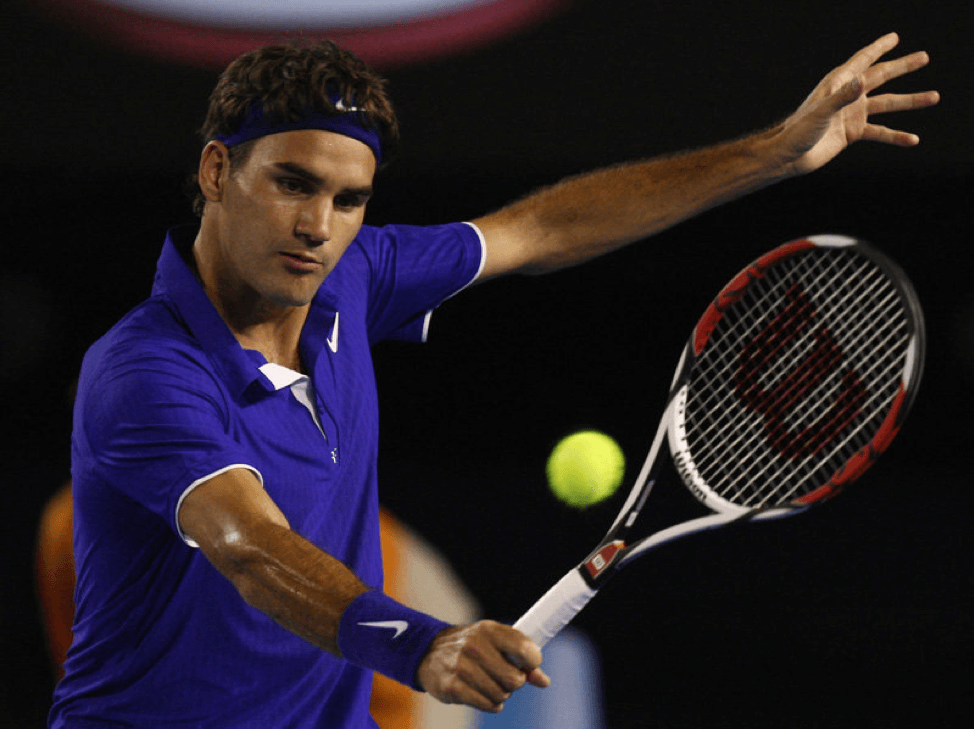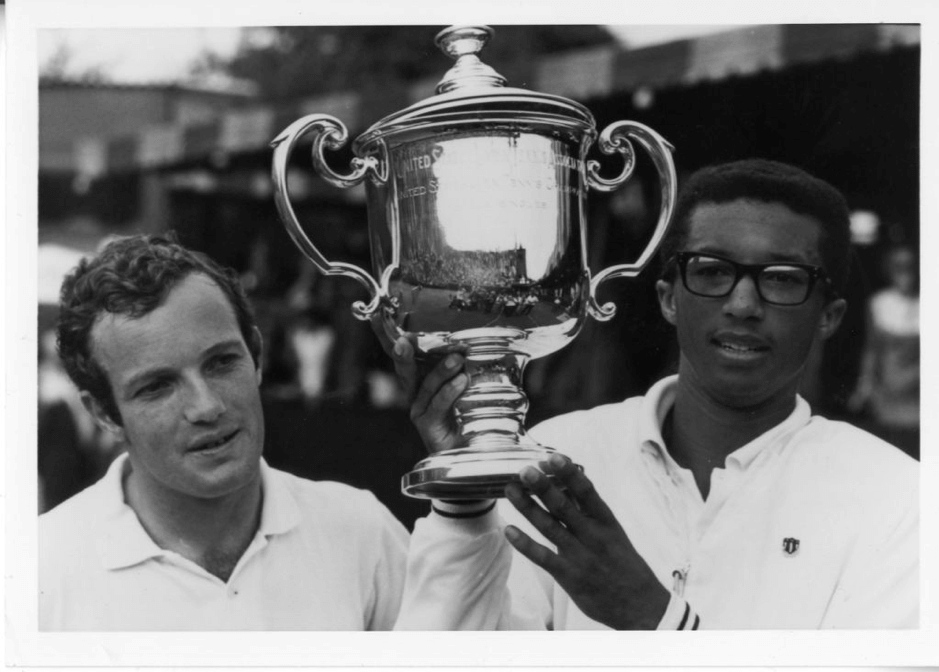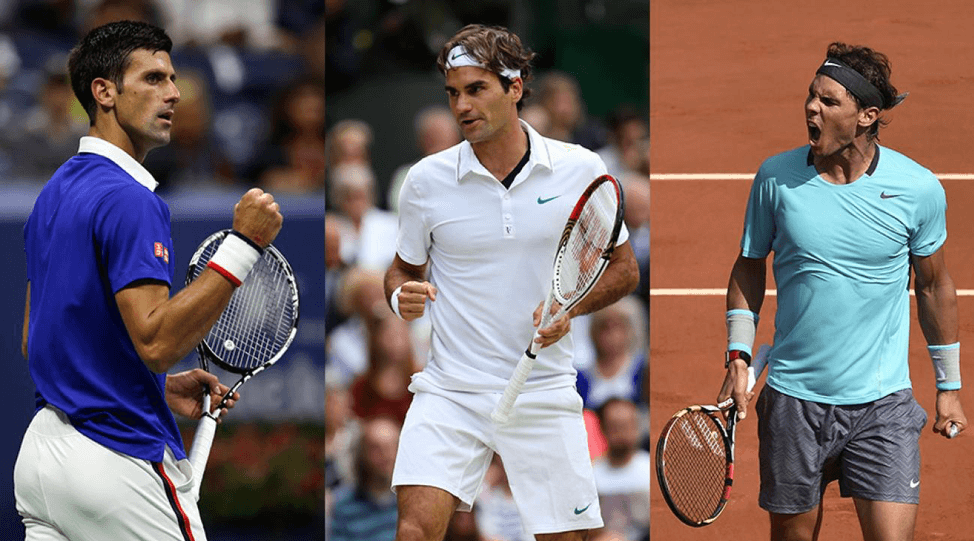THE BACKHAND AND ITS MANY FACES
Since its inception, lawn tennis has had four primary shots- the forehand, backhand, volley and serve and out of these four shots, there were further divisions such as the lob and the half volley to name a few. But none of them have caused such a meteoric shift in the game as has the development of the double handed backhand. The first notable players to use a two-handed backhand were the Australians, Vivian McGrath and John Bromwich in the 1930’s. Up until then, tennis was a one-handed game with the use of the other hand restricted to holding or tossing up (for serve) of the spare tennis balls.
Rise of the Double Handers

Chris Evert in her absolute pomp (Tennis Fame)
Chris Evert can be credited as the first global superstar to have successfully used a double-handed grip to win Grand Slams and to have brought this unique method of hitting the backhand into the game. She was an immensely successful player, winning multiple majors and achieving a World No. 1 ranking in her career. On the men’s side, two of the greatest icons of the game who left many-a-youngster aspiring to be like them were two-handed returners in Björn Borg and Jimmy Connors. Both of them couldn’t have been further apart from each other as personalities but they both played a major role in popularizing the stroke.
Essentially, the two-handed backhand helps a player in improving their control on the ball and since it involves the distribution of the power of the shot into the entire upper torso of a player, it is an easier technique to be taught to the youngsters. This method has produced some of the best counter punchers that the world has ever seen from Agassi to Davydenko and from Nadal to Murray and Djokovic. These men have the used the advantages of the double-hander to its optimum level and have cemented themselves as some of the finest returners in the game.
When a player uses both their hands, there is a lesser chance of variation in the shot and therefore it gives him/her a higher efficiency rate in terms of the number of balls they can keep in the same spot shot after shot.
Another major advantage of the double-handed backhand is the use of larger frame (head-size) racquets i.e. in a tennis racquet like most other equipment-held sports, there is a sweet spot generally at the center of the frame where the tension in the guts, the power generated in the shot and the spin added to the ball is at its best. Hence, the larger the frame, the greater is the size of the sweet spot and this aspect of tennis is shown best in the double-handed backhand because here the power generation is through two shoulders and doesn’t rely as much on the sweet spot. Even the spin can be added through the wrists. This allows the players to use a larger head-size racquet and yet maintain all the benefits of their backhands.
Tennis is rightly called out to be as much a lower torso sport as aspects such as upper body strength game, footwork and the speed of movement are vital in today’s game and the double-handed backhand is a great option for the rising breed of players as it allows one to change direction very quickly and also doesn’t need any specific change in the footwork of a player from the forehand to the backhand.
The Artisanal Stroke
The sheer glamour attached to a perfectly hit single-handed backhand in tennis transcends all the strokes in the game. It is a thing of beauty; a magnificence par excellence. Anyone who has played the sport all his life can safely say that this is the toughest shot in the book because there are just so many variables to it. The balance, the footwork, the grip, the arm strength, the core strength; the list is endless. It just requires for one little thing to go awry and the entire shot looks like it was always meant to reach the supporters in the second tier of the stadium.
The single hander has been the purist’s shot as it was the only way to hit a backhand up until the middle of the 20th Century and then saw a steep decline in its utilization due to the obvious benefits that the double-hander gave its proponents. It is a much tougher shot to learn for aspiring players and one requires immense shoulder and forearm strength to simply strike a ball hard while standing opposite to one’s natural side.
The high balls, a tactic often used against Roger Federer, Stanislas Wawrinka and Stefanos Tsitsipas which are full of topspin when played to a single handers backhand are very difficult to control and then respond promptly. This stroke has all the challenges and also requires players to play with a specified head size in terms of racquets as they cannot afford to have a spread-out sweet spot due to the level of precision required with the shot.
With all these cons why is it that we in 2019 are seeing a rise of the single-handers? Federer, Wawrinka, Gasquet, Robredo and Lopez have for long been the protectors of a ‘dying art’ but we see a lot of players from the younger generation once again using the single-handed backhand today. While the impact of Federer on young minds transcends sport, this too can be somewhat attributed to him. Despite the fact that he cannot ever be claimed as the only reason for the rise in popularity of the stroke but the fact that the greatest player to ever step foot on a tennis court uses the shot is often enough of a reason for players on the come up to try and copy him.

Federer’s one-handed backhand is as effortless as it can get and adds to the genius of an icon of the game
The one-handed backhand allows a player to add more variety to their shot and is also able to use and control the slice shot much better. Also, it helps in developing extremely good volleying skills as often these days, half-volleys are a natural part of the server’s game. The old adage of ‘chip and charge’ has come back into the game and we see more and more players trying to bring about this variation into their styles of play.
To sum things up
Despite what may be the preferred stroke for a player, be it a single or double handed backhand, the stroke in itself is the most exquisite looking shot most players ever hit. Whether they are on the run, up the line, inside out or crosscourt backhands, which often leave the adoring public gasping at the immense control and athleticism of the players, it truly is a moment of marvel. So, it is an impossible debate to have as to which one is better because for each body type, each personality and each game style, there is a different combination of shots that works.
Many players who played a single-handed game in their youth have shifted to the double handers and the cases for players going the other way have been a few with Stefan Edberg and Pete Sampras, two notable mentions of champions who changed their grips in their teenage years.

What matters is the shot and a player’s ability to win points using that shot- it is of almost no importance which is the better way to hit it. Of course, the aesthetics matter to the viewers and it is almost a no contest when it comes to that but to pass judgement on the basis of pure appearance is a tad bit delusional. In conclusion, there is absolutely nothing better than to watch a perfectly executed one- handed backhand on a tennis court but it is not like the double-handers ever won any lesser number of points due to their preferred shot. Hence, it’s best to champion the different strokes for different folks.
Read More
THE 1968 US OPEN: A NEW CHAMPION, A NEW ERA
AVICHAL GUPTA \
THROWBACKS
THE TENNIS NEXT GEN- A CASE FOR THEIR HELPLESSNESS
ANANYA CHANDRA \
FEATURES
ANGER AND ITS TRYSTS WITH CHAMPIONS
KUSHAGR DIXIT \
FEATURES



